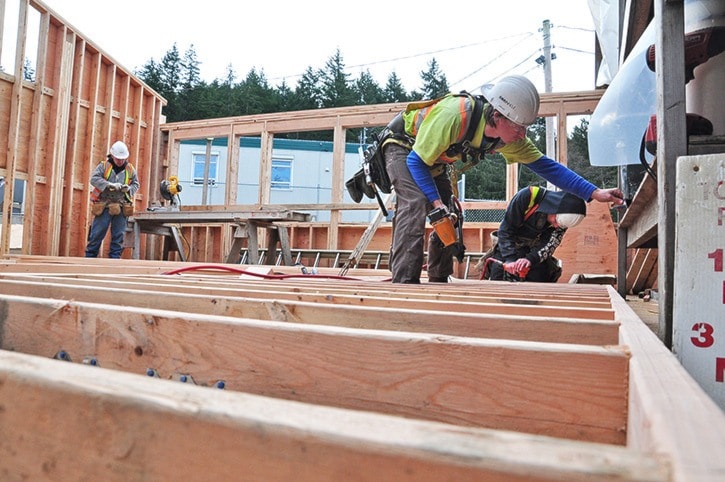The results are in and if you’re a young adult working in the construction industry, someone may have to read them a little louder to you.
Recently released data, collected last year by WorkSafeBC, shows young construction workers are less likely to wear proper hearing protection while working than those in other age groups in the industry. The study also found these workers are less likely to wear protection than counterparts in other industries such as manufacturing.
The data stated that roughly 24 per cent of construction workers under 21 reported not wearing hearing protection. That’s nearly double the unprotected rate for workers over 50 (13 per cent) and more than double workers in all other age groups (11 per cent).
It’s a pattern that could have a long-term impact for many West Shore residents, especially as more local young adults start working in the region’s booming construction industry.
“Noise-induced hearing loss needs to be taken very seriously,” said Sasha Brown, WorkSafeBC occupational audiologist, in a statement. “It can be caused by a single exposure to loud noise or more typically, by repeated exposure to consistent noise. While the damage may be painless, it is irreversible and may go unnoticed for years, or even decades, until it reaches a point where it has a significant effect on one’s quality of life.”
Since 2006, more than 37,000 claims for noise-induced hearing loss have been accepted in B.C.
“We want to raise the level of awareness among employers of the prevalence and seriousness of this occupational disease, as well as the need to have prevention programs and testing in place, so workers don’t have to live with its debilitating effects for the rest of their lives,” Brown added.
Employers are required to provide hearing loss prevention programs, according to the Occupational Health and Safety Regulation, which can include monitoring noise levels and conduct annual hearing tests for workers exposed to hazardous noise levels.
But workers themselves are responsible for wearing appropriate hearing protection and taking part in prevention programs.
For more information on hearing loss prevention programs, go to bit.ly/2nNxuGr.
katie@goldstreamgazette.com
